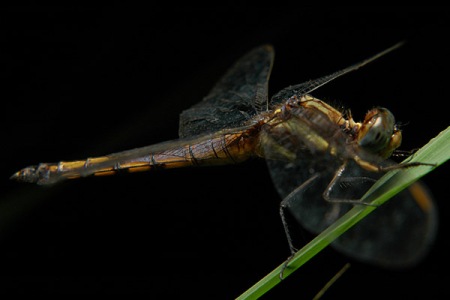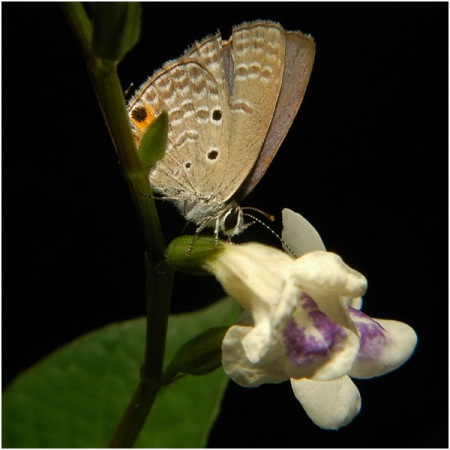Pepatung merupakan sejenis serangga dalam order Odonata, suborder Epicrota atau, lebih tepat lagi di bawah infraorder Anisoptera. Ia dikategorikan bedasarkan ciri-ciri mata bersegi besar, mempunyai 2 pasang sayap yang kuat dan lutsinar, dan berbadan panjang. Walaupun pepatung mempunyai 6 kaki seperti serangga-serangga lain, ia tetap tidak boleh berjalan. Pepatung juga merupakan serangga yang paling laju terbang.
Pepatung adalah pemangsa berguna yang memakan nyamuk, dan pelbagai serangga kecil lain seperti lalat, lebah, semut dan kupu-kupu. Ia biasanya boleh dijumpai di sekitar tasik, kolam, sungai dan tanah lembap kerana larvanya, yang juga dikenali sebagai “nimfa”, adalah bersifat akuatik.
Nimfa boleh memberi kesan gigitan yang menyakitkan apabila terancam. Pastikan anda membersihkan kawasan gigitan seluruhnya untuk mencegah jangkitan air tersimpan di bawah kulit.
Kitaran hidup
Pepatung betina bertelur di dalam atau berhampiran dengan air, pada kebiasaannya di atas tumbuhan terapung atau tumbuhan baru. Semasa bertelur, sesetengah spesies akan menyelam sepenuhnya untuk bertelur dalam permukaan yang baik. Telur tersebut kemudiannya menetas menjadi nimfa. Kebanyakan kehidupan pepatung diluangkan di dalam naiad (sejenis bentuk nimfa), di bawah permukaan air, menggunakan muncung yang boleh dipanjangkan untuk menangkap invertebrata atau vertebrata lain seperti berudu, ikan dan lain-lain. Mereka bernafas melalui insang yang terdapat di dalam rectum, dan boleh menggerakkan badan mereka dengan pantas melalui cara memaksa air keluar dari anus secara tiba-tiba. Sesetengah nimfa juga memburu di darat, satu kebolehan yang agak biasa pada zaman dahulu ketika pemangsa di bumi masih lembab.
Peringkat larva bagi pepatung yang besar boleh mencecah sehingga 5 tahun. Dalam spesies yang lebih kecil, peringkat ini hanya mengambil masa antara 2 bulan hingga 3 tahun. Apabila larva telah bersedia untuk menjalani metamorfosis menjadi dewasa,ia akan memanjat lalang air atau tumbuhan terapung. Keadaan terdedah kepada udara menyebabkan larva mula bernafas. Kulit larva atau juga digelar sebagai kepompong akan terbuka pada bahagian yang lemah dan lembut di belakang kepala. Kemudian, pepatung dewasa akan merangkak keluar dari kulit larva yang lama lalu mengembangkan sayapnya dan terbang mencari lalat atau serangga kecil sebagai makanan. Peringkat dewasa bagi kebanyakan pepatung hanya selama 4 bulan.
Pepatung dalam kehidupan manusia
Di Eropah, pepatung selalu dianggap sebagai satu ancaman. Di sebahagian negara Amerika Selatan, pepatung juga dipanggil metacaballo yang bermaksud pembunuh kuda memandangkan ia dilihat boleh mendatangkan bahaya kerana sesetengah spesies adalah sangat besar untuk dikategorikan sebagai serangga. Walau bagaimanapun, pepatung mempunyai reputasi yang lebih baik di Asia Timur dan pedalaman Amerika. Di pedalaman Amerika, ia dipercayai sebagai simbol perubahan selepas berusaha bersungguh-sungguh melakukan sesuatu. Di negara Jepun pula, pepatung dianggap sebagai lambang keberanian, kekuatan dan kegembiraan, malah ia sering dipersembahkan dalam seni dan kesusasteraan terutamanya haiku. Pepatung juga pernah digunakan sebagai ubat pada zaman dahulu di negara China dan Jepun. Di sebahagian kawasan di Bumi seperti di Indonesia, ia juga merupakan sumber makanan yang dimakan sama ada dewasa ataupun larva.
Gambar-gambar menarik tentang pepatung adalah biasa dalam Art Nouveau, terutamanya dalam mereka bentuk barang kemas. Ia juga digunakan sebagai motif dekoratif pada fabrik dan hiasan rumah.

A dragonfly is a type of insect belonging to the order Odonata, the suborder Epiprocta or, in the strict sense, the infraorder Anisoptera. It is characterized by large multifaceted eyes, two pairs of strong transparent wings, and an elongated body. Dragonflies are similar to damselflies, but the adults can be differentiated by the fact that the wings of most dragonflies are held away from, and perpendicular to, the body when at rest. Even though dragonflies possess 6 legs like any other insect, they are not capable of walking.
Dragonflies are valuable predators that eat mosquitoes, and other small insects like flies, bees, ants, and butterflies. They are usually found around lakes, ponds, streams and wetlands because their larvae, known as “nymphs”, are aquatic.
Nymphs can deliver a painful bite when threatened. The wound should be cleaned thoroughly to prevent water-borne infections.
Life cycle
Female dragonfly lay eggs in or near water, often on floating or emergent plants. When laying eggs, some species will submerge themselves completely in order to lay their eggs on a good surface. The eggs then hatch into nymphs. Most of a dragonfly’s life is spent in the naiad (that is, nymph) form, beneath the water’s surface, using extendable jaws to catch other invertebrates or even vertebrates such as tadpoles, fish, etc. They breathe through gills in their rectum, and can rapidly propel themselves by suddenly expelling water through the anus.[1] Some nymphs even hunt on land,[2] an aptitude which could easily have been more common in ancient times when terrestrial predators were clumsier.
The larval stage of large dragonflies may last as long as five years. In smaller species, this stage may last between two months and three years. When the larva is ready to metamorphose into an adult, it climbs up a reed or other emergent plant. Exposure to air causes the larvae to begin breathing. The skin splits at a weak spot behind the head and the adult dragonfly crawls out of its old larval skin, pumps up its wings, and flies off to feed on midges and flies. The adult stage of larger species of dragonfly can last as long as five or six months.
Classification (Anisozygoptera)
Formerly, the Anisoptera were given suborder rank beside the “ancient dragonflies” (Anisozygoptera) which were believed to contain the two living species of the genus Epiophlebia and numerous fossil ones. More recently it turned out that the “anisozygopterans” form a paraphyletic assemblage of morphologically primitive relatives of the Anisoptera. Thus, the Anisoptera (true dragonflies) are reduced to an infraorder in the new suborder Epiprocta (dragonflies in general). The artificial grouping Anisozygoptera is disbanded, its members being largely recognized as extinct offshoots at various stages of dragonfly evolution. The two living species formerly placed there — the Asian relict dragonflies — form the infraorder Epiophlebioptera alongside the Anisoptera.
 A butterfly is an insect of the order Lepidoptera. Like all Lepidoptera, butterflies are notable for their unusual life cycle with a larval caterpillar stage, an inactive pupal stage, and a spectacular metamorphosis into a familiar and colourful winged adult form. Most species are day-flying so they regularly attract attention. The diverse patterns formed by their brightly coloured wings and their erratic yet graceful flight have made butterfly watching a hobby.
A butterfly is an insect of the order Lepidoptera. Like all Lepidoptera, butterflies are notable for their unusual life cycle with a larval caterpillar stage, an inactive pupal stage, and a spectacular metamorphosis into a familiar and colourful winged adult form. Most species are day-flying so they regularly attract attention. The diverse patterns formed by their brightly coloured wings and their erratic yet graceful flight have made butterfly watching a hobby.












